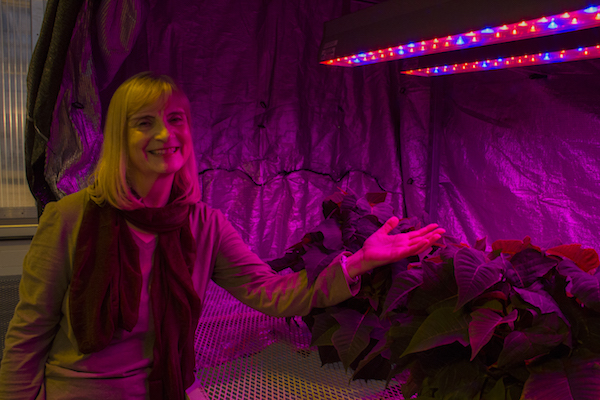Researching light
LED use in Alaska greenhouses studied
Horticulture Professor Meriam Karlsson is studying the use of LEDs in high-latitude greenhouses and developing guidelines for their use. She says that LEDs are a good research tool because they allow researchers to “hone in on different aspects of light.”
Although it has always been assumed that full-spectrum light is the best, Karlsson says that may not be the case. For example, she has found that for photosynthesis to occur you need to increase red and blue light, but you also need to “tweak” the mix of red(s), blue and even white and yellow to get exactly what you want.
She says there have been lots of studies on the effects of blue on plants. For example, adding more blue during the last three days of growing could increase the level of antioxidants in the plant, and blue light provided during transportation could keep levels of antioxidants from decreasing. By increasing red, plants might develop more vitamin C.
The guidelines Karlsson is developing will probably include different levels of blue and red with some added white to make the light more appealing to humans. Also, different plants at different stages need different types of light. For example, she has found that seedling tomatoes need a different mix of LEDs than do grafted plants.
Right now, she says, LEDs make the best sense for seedlings and plants that grow close to the ground, but last summer she grew peppers and will continue growing them, as well as tomatoes, this year.
FYI ...
- Light-emitting diodes are popular because they use less energy, last longer and are cheaper and smaller than other bulbs.
- LEDs don’t contain mercury, emit UV radiation or damage organic materials.
- Because they do not produce heat, LEDs can be placed closer to the plants without burning them.
- LEDs can also be used for multilayer cultivation and interlighting, or placing bulbs within the plant canopy.



